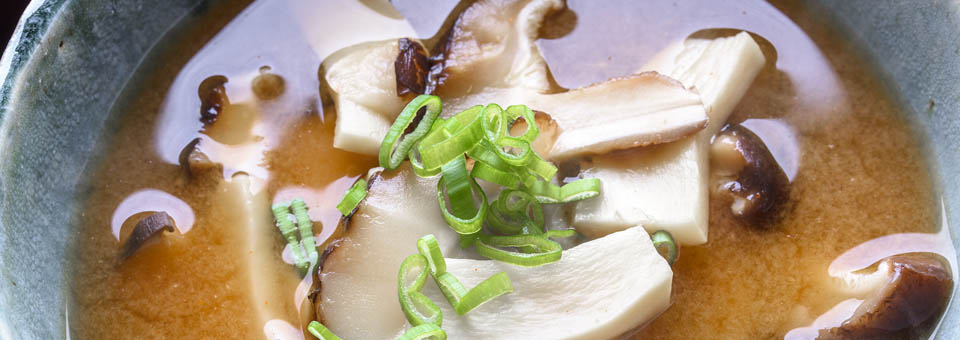My goal as an anti-aging doctor isn’t to just help my patients live longer… It’s to help them live healthier.
And despite the fact that people in the United States spend more money on health care than any other nation, we’re not living longer — or better.
According to a study published in The Lancet, those who live the longest and most vigorous lives are the Japanese.1
In a recent study, researchers looked at “healthy life expectancy” for 188 countries. They found that children born in Japan could expect to live to 73 without getting any major illness or disability. Overall, they could expect to live into their 80s.
On the other hand, the U.S. didn’t even crack the top 10. An American child can only expect to live in good health to about 65. Their overall life expectancy is only 76 on average.
I’m saddened. But not really surprised. You see, the Japanese diet is rich in a superfood that most Americans NEVER eat.
I’m talking about seaweed.
You see, edible plants from the sea have been used all over the world for thousands of years. They are some of the most potent anti-aging foods on Earth. Science proves it…
In a review of almost 100 scientific studies, researchers found that proteins in seaweed work to reduce blood pressure almost like ACE inhibitor drugs.2 They inhibit angiotensin-converting enzymes (ACE) that cause your blood vessels to constrict.
Seaweeds are also packed with
two “super antioxidants” that fight chronic disease:- Fucoidans. These molecules are believed to be responsible for many of seaweed’s impressive health benefits. In one study, researchers cultivated lymphoma cells in a lab. They found that seaweed rich in fucoidans prevented lymphoma cells from growing. And they left healthy cells intact.3
- Ecklonia cava. This super antioxidant is packed with immune-boosting, anti-inflammatory polyphenols. You can get polyphenols in lots of fruits and vegetables. But the polyphenols in seaweeds are up to 100 times more powerful.4
Studies also show that an extract of ecklonia cava called ECE is very powerful. It:
- Boosts energy levels and sleep in fibromyalgia patients.5
- Cuts cholesterol levels and raises HDL (good) cholesterol levels significantly.
- Is more effective at treating erectile dysfunction than prescription drugs.
Many Americans only eat seaweed when they’re at a Japanese restaurant. But today, this Asian superfood is becoming a hot trend around the world.
The most popular seaweeds are nori, dulse, arame, wakame, kelp, kombu and hijiki. You can find all of these seaweeds in Asian supermarkets as well as health food stores. Even some supermarkets are now stocking seaweed.
But be careful…
A large proportion of seaweeds on the market are imported. After the Fukushima nuclear accident, you should avoid seaweed from Japan. I recommend sea plants harvested in Iceland. Or look for suppliers from the British Isles, where it’s hand harvested.
Also, always buy certified organic sea vegetables. That way, you lower the risk of the vegetable being contaminated with the same kind of heavy metals you find in fish. I’m talking about mercury, arsenic, lead and cadmium.
Try My Simple Seaweed Soup Recipe to Stay Healthy Longer
Cooking with seaweed is easy. Wakame is my personal favorite. It has a mild flavor and tastes delicious in soups and salads. I also add a three- or four-inch dried strip of kombu to the pot when cooking soups, brown rice or quinoa. You can also add kombu to beans while they cook. It tenderizes the beans and makes them more digestible.
Here’s a very quick, easy way to get started with making a delicious Japanese miso soup with seaweed.
Miso Soup with Wakame and Kombu
Ingredients:
- 1 piece dried kombu
- 1 piece dried wakame
- 4 dried shiitake mushrooms
- 1 inch piece fresh ginger, chopped
- 2 Tbsp. miso paste
- 3 cups water
Directions:
- Soak kombu, wakame, and mushrooms in 3 cups of water in a saucepan for 30 minutes.
- Bring to a boil, then simmer for 30 minutes.
- Remove the kombu, wakame and mushrooms from the liquid.
- Slice wakame and kombu and return to stock.
- Cut stems off mushrooms and discard. Slice mushroom caps in half and return to saved liquid.
- Simmer on low heat until warmed through.
- Add miso. (Never boil miso because that kills its live probiotics.)
To Your Good Health,
![]()
Al Sears, MD, CNS
References
1. Murray CJL et al. “Global, regional, and national disability-adjusted life years (DALYs) for 306 diseases and injuries and healthy life expectancy (HALE) for 188 countries, 1990–2013: Quantifying the epidemiological transition.” Lancet. 2015; 386(10009):2145-2191.
2. Fitzgerald C, et al. “Heart health peptides from macroalgae and their potential use in functional foods.” J Agric Food Chem. 2011;59(13): 6829-6836.
3. Lee NY, et al. “Fucoidan from Laminaria cichorioides inhibits AP-1 transactivation and cell transformation in the mouse epidermal JB6 cells.” Mol Carcinog. 2008;47(8):629-637.
4. Shin, HC, et al. “An antioxidative and anti-inflammatory agent for potential treatment of osteoarthritis from Ecklonia cava.” Arch Pharm Res. 2006;29(2):165-171.
5. Shibata T, et al. “Inhibitory effects of brown algal phlorotannins on secretory phospholipase a2s, lipoxygenases and cycloxygenases,” J Appl Phycol. 2003;15: 61-66.

